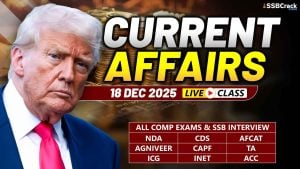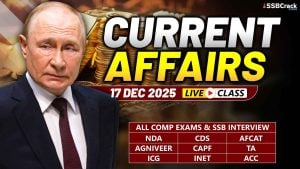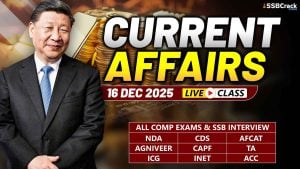Indo-Pacific Land Power Conference 2020
- Indo-Pacific Land Power Conference 2020 on a Free and Open Indo Pacific Region was conducted (hosted by USA) through video conferencing on May 21.
- Senior Officers including DGPP of Indian Army from 25 Nations discussed issues of regional security concerns and best practices in multi domain operations including counter covid aspects.
Russia claims that its new radar can track hypersonic missiles
- The new radar’s antenna reportedly is sensitive enough to detect targets flying at 8,000kph (nearly 5,000mph) and at a distance of up to 450km (280 miles).After detection, it exchanges radar information with C4I systems. It operates in conditions of jamming and carries out direction finding of active noise jammers, Rosoboronexport said.
- “In a real time mode, it can simultaneously track no less than 1 000 objects and recognize 8 classes of targets, which includes selection of anti-radar missiles and warning its own combat crew of the danger of elimination, inter alia, by high precision munitions and homing missiles. The 59N6-TE radar also includes equipment for the recognition of detected aerial targets in international radar recognition systems Mk-XA and ATC RBS,” the company said.
U.S. Army Soldiers train with legendary Soviet machine gun
- U.S. Army Soldiers received hands-on experience with foreign multiple weapon systems, including a legendary Soviet-designed machine gun during weapons training at Fort Bragg, North Carolina.
- The Soldiers were trained to employ, maintain, and engage targets with select foreign pistols, rifles, shotguns, submachine and machine guns, grenade launchers and mortars and in the utilization of observed fire procedures.
- The Students assigned to the U. S. Army John F. Kennedy Special Warfare Center and School is in the Special Forces Weapons Sergeant Course also have been trained with an SG-43 Goryunov machine.
- The SG-43 Goryunov was a Soviet medium machine gun that was introduced during the Second World War. It was chambered for the 7.62×54mmR cartridge and was introduced in 1943 as a replacement for the older M1910 Maxim machine guns. It was mounted on wheeled mounts, tripods and armoured vehicles.
- After the end of World War II, the SG-43 was improved and renamed SGM (“M” for modernized); dust covers and a new barrel lock were fitted, and a splined barrel was fitted to improve cooling. A coaxially mounted stockless electric solenoid-fired variant was developed under the designation SGMT (the “T” standing for Tankovy, or “Tank”). The SG-43M and SGMB are versions modified with dust covers and used mostly on armoured personnel carriers.
- In addition to World War II, SG-43 saw service in the Korean War with the Communist North Korean and Chinese forces. In Soviet service, the Goryunov, together with the RP-46, was replaced in the 1960s by the PK machine gun due to the switch in Soviet tactical doctrine to the general-purpose machine gun concept, rendering the gun effectively obsolete.
Raytheon contracted for US National Advanced Surface to Air Missile System
- The $92.3 million contract, announced Thursday by the Department of Defense, covers sustainment, maintenance, training, refurbishment, overhaul, engineering services and spares to support ongoing operations of the NASAMS.
- Work locations and funding will be determined with each order, with an estimated completion date of Feb. 14, 2024.
- The Raytheon’s website said the NASAMS is a highly adaptable mid-range air defense solution. NASAMS consists of the Sentinel radar, Advanced Medium Range Air-to-Air Missile, and KONGSBERG’s Fire Distribution Center.
- NASAMS provides air defenders with a tailorable, state-of-the-art defense system that can maximize their ability to identify, engage and destroy current and evolving enemy aircraft, unmanned aerial vehicle and emerging cruise missile threats.
- As noted by the company, NASAMS is owned by eleven countries and has been integrated into the U.S. National Capital Region’s air defense system since 2005. In addition to the U.S., Norway, Finland, Spain, The Netherlands, Oman, Lithuania, Indonesia, Australia, Qatar and one undisclosed country have chosen to depend on NASAMS for homeland defense and the defense of critical assets.
China hikes defence budget to $179 billion, nearly three times that of India
- India’s budget for 2020 amounted to $66.9 billion (Rs. 4,71,378 crore) according to a write-up in Indian Institute for Defence and Analysis, (IDSA).
- According to Stockholm International Peace Research Institute (SIPRI), the military expenditure figures of China’s defence spending in 2019 amounted to $232 billion.
Hizbul Mujahideen regroups in Kashmir, plans multiple terror attacks within 10 days: Intelligence
- Intelligence agencies said that they are trying to “mobilise innocent youth amid encounter/curfew and COVID”.
- Sources said that a group of Hizbul Mujahideen terrorists from South Kashmir has reportedly reached Kishtwar. The intel said Hizbul militant Ashraf Maulvi has move from Anantnag to Kishtwar to command the Hizbul cadres in the area.
- The agencies said that they are planning to “exploit local youth as cannon fodder for selfish purpose”. They are planning to use of stone pelters as human shield while carrying out terror activities.
- “Possibility of managed hostage situation cannot be ruled out,” Intelligence Bureau has alerted.
- Naikoo, an HM leader, was eliminated by security forces on May 6. He was killed during an anti-terrorist operation conducted by the Army and Jammu and Kashmir Police in the Beighpura area of Pulwama district. The 35-year-old carried a bounty of Rs 12 lakh on his head and was a key target for India once he took charge of the Hizbul Mujahideen in Kashmir.
- Five Hizbul militants have been spotted near Gurez and they are likely to attempt to enter into Jammu and Kashmir very soon, according to Intel.
- Intelligence Bureau has also alerted that the Pakistan has planned to carry out attacks at various Indian Army posts on the Line of Control by their Battle Action Teams.
- Two groups of terrorists in the Krishna Ghati and Naushera sectors are likely to strike posts in the area, the agencies have warned.
Cyclone Amphan: IAF continues to be on High State of Preparedness for undertaking Relief Operations
- A total of 56 Heavy and Medium Lift assets comprising of 25 fixed-wing aircraft and 31 helicopters were earmarked by the IAF.
- The Crisis Management Cell activated at Air HQ.
- 2 C-130 aircraft airlifted 4 NDRF teams, 2 each from Pune and Arakkonam for Kolkata on 21 May 20. Along with these teams, 8.6 tonnes of heavy equipment / machinery required to undertake relief operations by NDRF was also airlifted.
IAM to play pivotal role after Indian astronaut-selects return from Russia
- Air Vice-Marshal (Dr) Pankaj Tyagi, (Retd), former Commandant of Institute of Aerospace Medicine and founder CEO of Space Aviation Medicine and Engineering Creative Solutions Plus (SAMECSPlus) says that the time has now come to clearly define the areas in which work needs to be done to achieve the Gaganyaan’s overall objectives.
- Experts from Roscosmos and NASA have approved the selection at IAM and said that the institution is cleared to conduct medicals for all future astronauts.
- IAM’s role will be very critical for the success of Gaganyaan mission. Many in the know-how of manned space explorations believe that training for astronaut-selects will have to be systematic and in a decent-paced manner.
- “Ahead of finalising the four TPs, there were several levels of the selection process. Level-0 was the preliminary one, Level-1 more advanced training and Level-2 was the advanced aeromedical evaluation. However, the levels had to be merged for lack of time and owing to the urgency to send the TPs to Russia. The distinction was certainly lost and we hope it will be a different story in future,” says an official part of the Gaganyaan team from IAF.
- He said more than the technology, it is the training given to the astronauts that will eventually do the work for the missions. “The technology works the same way in space as it functions on earth. If you go by the records and read various studies by NASA, it is estimated that about 40 per cent of the technology made for space doesn’t work. So it is going to be a challenge for India as we do not yet have the expertise to deliver space tech that can cater to human beings,” he says.
- Right now the four astronaut-selects are only undergoing generic space training at the Gagarin Research & Test Cosmonaut Training Center. “The pilots will have to know every system onboard and also every situation that they will encounter. The in-depth system training will happen when they return to IAM. Now they are getting training on Soyuz spacecraft and once they are back they will get simulator training on Gaganyaan-specific module,” says the official.
- The simulators have to come up at IAF with the help of HAL’s Aerospace Division and ISRO Telemetry, Tracking and Command Network.
- The astronaut-selects will also get the training for G-forces and motion sickness at IAM, for which some facilities are already up and running.
- “IAM has the expertise in the selection of astronauts from 1982, ahead of Rakesh Sharma’s space mission. Over the years, IAM has been doing regular selection-related programmes for pilots and Navy observes. Even when the EU, Japan and Canada gave up their manned space missions, IAM was constantly undertaking various studies in this regard, knowing that India would embrace the manned space mission one day,” says another official overseeing the Gaganyaan mission.
- “Gaganyaan to me is a bigger programme, while ISRO is only an existing resource, not equipped for the moment to deliver all requirements purely on its own. It must grow in multiple fields requiring time and investment in infrastructure, research and huge funds. Presently it is purchasing minimal required used technological platforms from Russia,” says AVM Pankaj (Retd). According to him, the components of the space programme can be generally classified into travel, explore, discover, claim and inhabit.
- “We are at the travel stage for the moment. After reaching space, what is it that we are going to do is more important and yet to be thought, to get max value for money for the first flight. There needs to be complete clarity on the broad aims of this national programme,” he says.
- He says that space expedition by India for the moment means travel – our ability to reach space and come back safely, repeatedly on our platforms from our own soil on our own schedules.
- “Exploration is the process of treading new zones yet unknown. Discovering is unravelling new finds. Claiming is creating ownership of your own space. Inhabiting is making a new place one’s home. Observing, understanding, absorbing, adjusting, adapting, optimising are the skills used for all the steps. A strong human-machine combination appropriate for the mission with enough redundancies is the key to success,” he adds.
IAM’s Expertise
- For the Gaganyaan mission, IAM has certain expertise and capable of providing training for acceleration stress, orientation issues, stress due to haemodynamic changes, hypoxic stress, space motion sickness and vibration stress. Besides, IAM can also provide the following:
- Anthropometric dimensions for Indian population of space capsule design.
- Human engineering inputs for the design of space capsule, including habitable space, control systems and safety.
- Safety inputs for accelerations, hypoxia, CO2 levels, toxic gases, waste disposal etc.
- Inputs on systems required for life support in space.
- Inputs on training required for life support systems.
- Interestingly all MD students at IAM are taught approximately 40 hours of lessons linked to aerospace medicines. Experts from Roscosmos and NASA have approved the selection at IAM and said that the institution is cleared to conduct medicals for all future astronauts.
- India’s dreams of HSP took wing in 2006 when the Centre wanted to understand the pros and cons of the mission. ISRO began the pre-programme phase in 2006 and in 2009 IAM and Vikram Sarabhai Space Centre signed an MoU for the same.
- The MoU was to build a facility for HSP and also to determine what would get into the selection of astronauts and what kind of training is required to go to space.
- After PM Modi announced about Gaganyaan officially on August 15, 2018, the IAF and ISRO inked an MoU for selection, training and other aspects of the Gaganyaan mission on May 28, 2019.
Following are some of the key areas where IAM’s expertise will be put to use as the mission slowly and steadily gain momentum.
- Selection of vehicle and spacecraft
- Selection of vehicle crew and training
- User and technical manuals to be used for Environment Control and Life Support System (ECLSS)
- Human engineering workstation design for the crew module
- Isolation and psychological management
- Human factors considerations in the manned space programme
- Microgravity research
- Gravitational stress management in various phases of space flight
- Clinical space medical and surgical management
- Radiation protection
- Toxicology in space
- Emergency survival system design
- Space station life support system
- Extravehicular activity (EVA) design
- Heat stress management
- Operational space medicine
- Scientific and technical manpower management
- Infrastructure development related to aero-medical support of HSP
REVIEW QUESTIONS
- NASAMS full form:
- National Aeronautics and Space Administration Missile Systems
- National Advanced Surface to Air Missile System
- National Advanced Supersonic Air Missile System
- National Aerospace Studies on Advanced Missile Systems
ANSWER: B
- How many fixed wing aircrafts of IAF are ready for HADR operations for Amphan cyclone?
- 22
- 23
- 24
- 25
ANSWER: D
- How many helicopters of IAF are ready for HADR operations for Amphan cyclone?
- 29
- 32
- 26
- 31
ANSWER: D
- Institute of Aerospace Medicine is located at:
- Pune
- Hyderabad
- Bengaluru
- Jodhpur
ANSWER: C



















